Our 20th anniversary was coming up so I decided to surprise my wife with a getaway trip to Lake Garda in Italy. I didn’t tell her about my plans, just let her know a couple of hours before we had to catch our plane. This would be our second trip to Italy’s northern lake district, as we visited Lake Como last fall. Everything went quite smoothly… until we arrived at the car rental agency in Venice.
If you are mostly interested in the places we visited (Verona, Lake Garda and Sirmione), you may want to skip down the page and not read about our travails trying to get to Lake Garda.
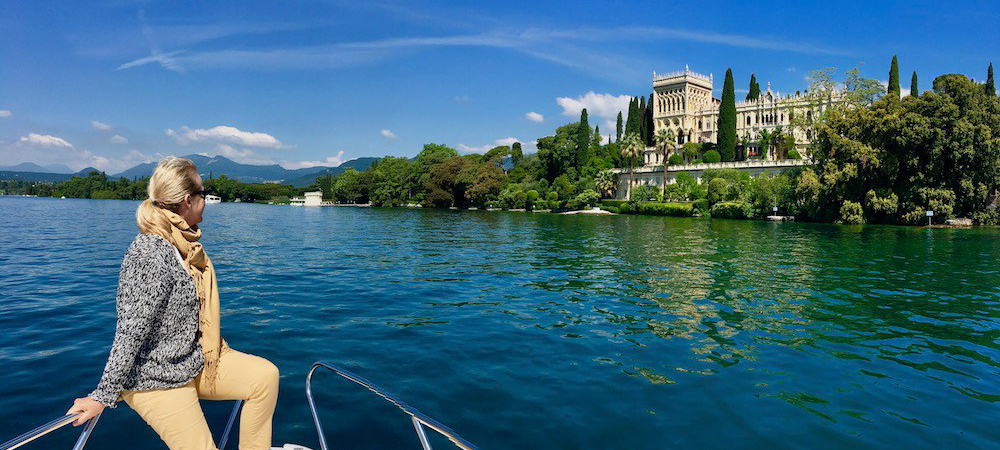
I had concerns about my provisional Portuguese driver’s license, whether they would accept it or not for a rental outside of Portugal, so I told Flo beforehand to take her French license, just in case. My concerns were valid as they wouldn’t accept it, but then we discovered that although Flo had her license, she hadn’t taken a credit card with her. She had considered taking it, but thought, hey, if John’s paying, why would she need a credit card? Unfortunately she’d forgotten about the car rental scenario. So, we were without transportation. The agent suggested we take a train. So we headed back to the airport and took a bus to the train station at Mestre. The bus was full, standing room only, and it seemed to stop at every 2nd corner.
We arrived at Mestre and purchased tickets first for a train to Verona, and a second to Desenzano – the town closest to our hotel. We were fortunate that a train was leaving in 15 minutes, with a 6 minute connection in Verona. We got on the train and settled in, finally relaxing a little more, confident that we were now going to make it to our hotel. We arrived at the Verona station a little early, and stepped down to what seemed a rather small station for a city the size of Verona. That’s because it was not the correct station. We wanted to transfer at Verona “PN” and I got us off at Verona “PV”. Now there was no way we’d make our connection.
There were no taxis, and the next train to “PV” was not for another hour. We moved to track three and waited for the train. Black clouds rolled in and we could hear distant thunder. Soon it was pouring. We found cover and heard an announcement that our train was 20 minutes late. We waited under cover until finally the train arrived. We’d checked in online and discovered that the next train to Desenzano was not for another 1.5 hours. So once we arrived in “PN” we found a pub and ordered a drink. I decided to confirm the time of the train at the ticket office and it was good I did as the train was actually passing through 15 minutes earlier – we would’ve missed it.
We finally got on the train (quite a nice one) that was heading for Milan, and got off at Desenzano. This time there was a taxi at the station, which took us to our hotel; arriving six hours after we’d landed in Italy (for what was only supposed to an 1 1/2 hour car drive).
But the hotel Aquila d’Oro was beautiful, right alongside the lakeshore, halfway between Desenzano and Sermione. And our troubles were soon forgotten as a bottle of rosé champagne awaited us in our room. We drank half, capped the rest for the next day, and then went down to the waterfront, to a small kiosk type restaurant that served Aperos and Prosecco. We found a nice loveseat-style lounge chair and enjoyed our drinks while the sun set behind the mountains that surrounded Lake Garda.
Lake Garda is shaped like an upside-down drumstick. Along its southerly shore it is widest and the most shallow, and the land around it is quite flat. But as you head north the lake narrows and deepens, and the land around it steepens, so much so that in May there was still snow on some of the peaks that look over the lake. It made for an amazing backdrop for our view.
Lake Garda by Boat
I’d brought along my boat license, (fortunately, since we couldn’t get a car!), so the next morning we decided to explore the lake by boat. There’s a small marina next to the hotel and the operator of the rental company was kind enough to deliver a boat to us.
His name was Mathias and he’s originally from Argentina but had been in Italy for 15 years. I handed him my boat license and then my passport. When he saw that I was Canadian he said, “Ah Canadian – are you going to save us from that crazy guy below you?” I took it he was referring to Trump. He then went on for a good 20 minutes about what a terrible leader Trump is, as we did the inspection of the boat. I was very impressed by how much he knew about Trump and the Mueller investigation. I told him I’d just finished James Comey’s book; “ Ahh,” he said, “A Higher Authority – how is it?” He not only knew who Comey was, but the name of his book. His take on Americans, as they elected him, was not very positive as he just couldn’t understand how they could’ve elect him. But hey, Italy put Mussolini in power, partnered with Hitler, and Argentina hasn’t had the best leaders in recent times, or certainly not for their economy, so he should’ve understood these things can happen. But he was so perturbed that I don’t know if he would’ve rented to me if I’d been American!
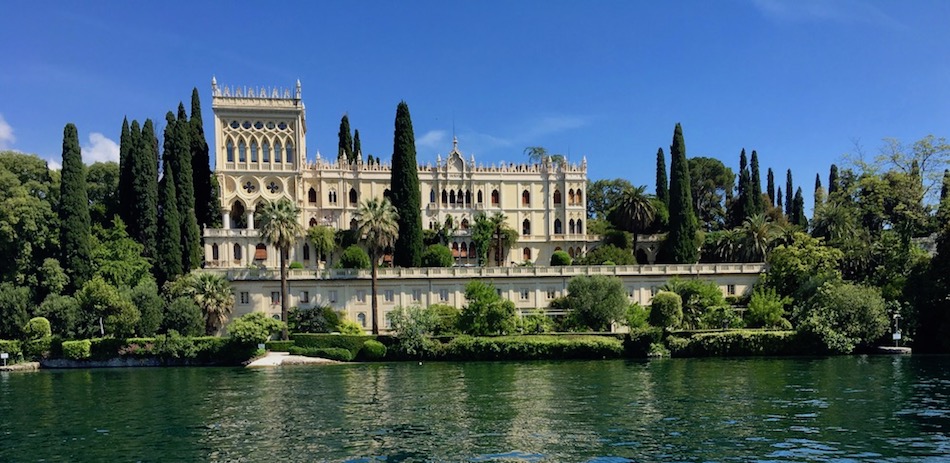
We first visited the privately owned Garda Island, the largest of a few small islands on the lake, which has a very large chateau on its very manicured property. The family opens up a portion of the home and all the gardens during the summer months to help offset operation costs. We skipped the tour and instead just enjoyed a tour around by water.
We then made our way over to the very picturesque town of Salo that has a lovely lakefront promenade stretching from the town marina to the village church. We cruised by slowly, taking in the beautiful lakefront boardwalk that’s lined with sculptures and architecturally beautiful buildings. Salo is said to be the prettiest of the Lake Garda towns.
We continued our slow cruise northeasterly past Salo towards the next towns of Gardone Riviera and Toscalano, taking in the amazing waterfront homes and mansions that line the shoreline in between the two. There are some really incredible properties here, a few that have been turned into boutique hotels while others remain private.
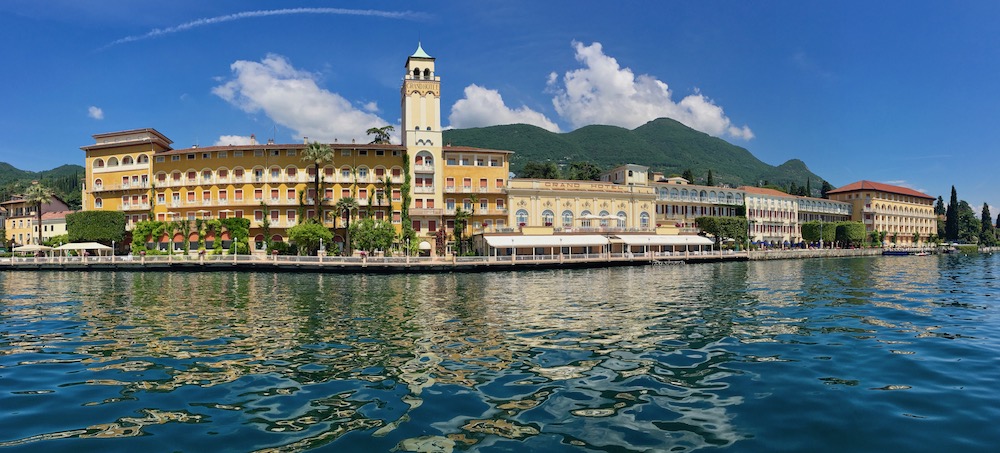
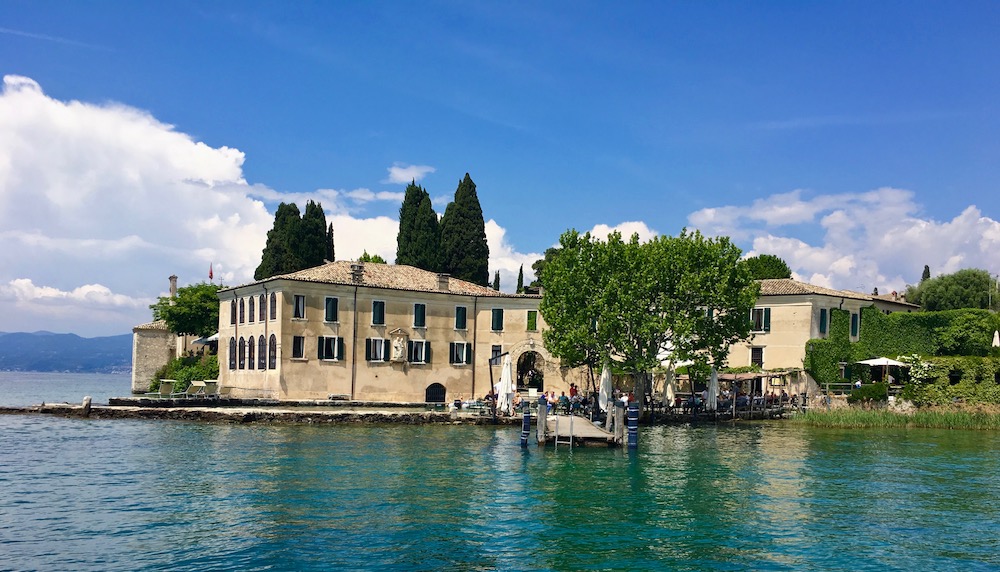
From Toscalano we headed across to the point of San Viglio, which juts out into the lake and once was a private home/mansion, but the grounds are now a public park and the buildings have been turned into rental apartments. There’s a wonderful lakefront restaurant alongside the small port of San Viglio. Boats tie up to buoys or drop anchor and a small boat picks them up and provides passage to the restaurant.
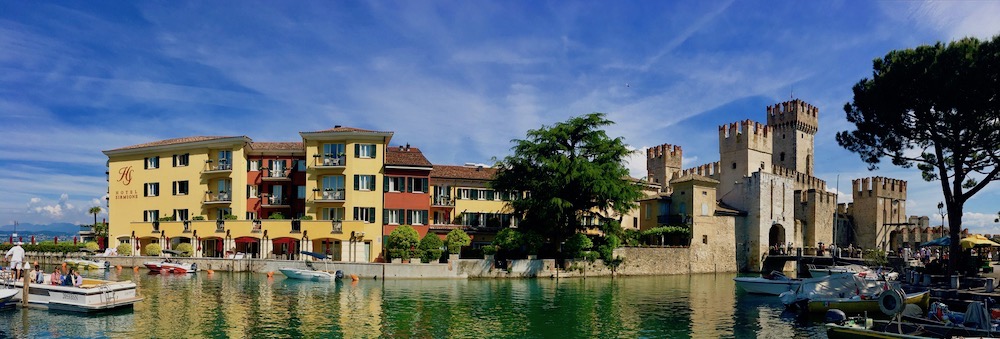
From there we headed south to the peninsula/spit of Sermione. This is a very narrow piece of land that juts out nearly 5 km into the lake, and at places is no more than 100 meters wide. In the middle near the point is the town center with the impressive Scaliger Castle, while at the very tip are the ruins of large Roman villa, and also a popular swimming spot.
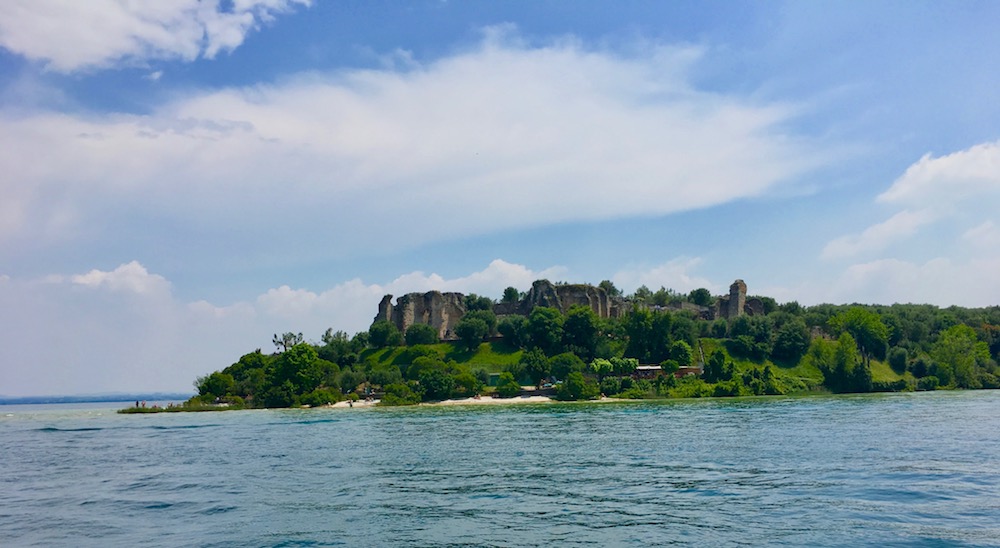
Sermione has been a favorite resort area since the 1st century BC, especially for rich families from Verona that enjoyed easy lake access, but also because of its thermal springs. Today, there a couple of spas on the peninsula that still utilize its warm waters for therapeutical purposes. In the 4th-5th centuries a Roman fortress was constructed to defend the southern shores of the lake, which later became a private Roman villa. Its ruins, called the Grottoes of Catullus, can still be seen and explored today.
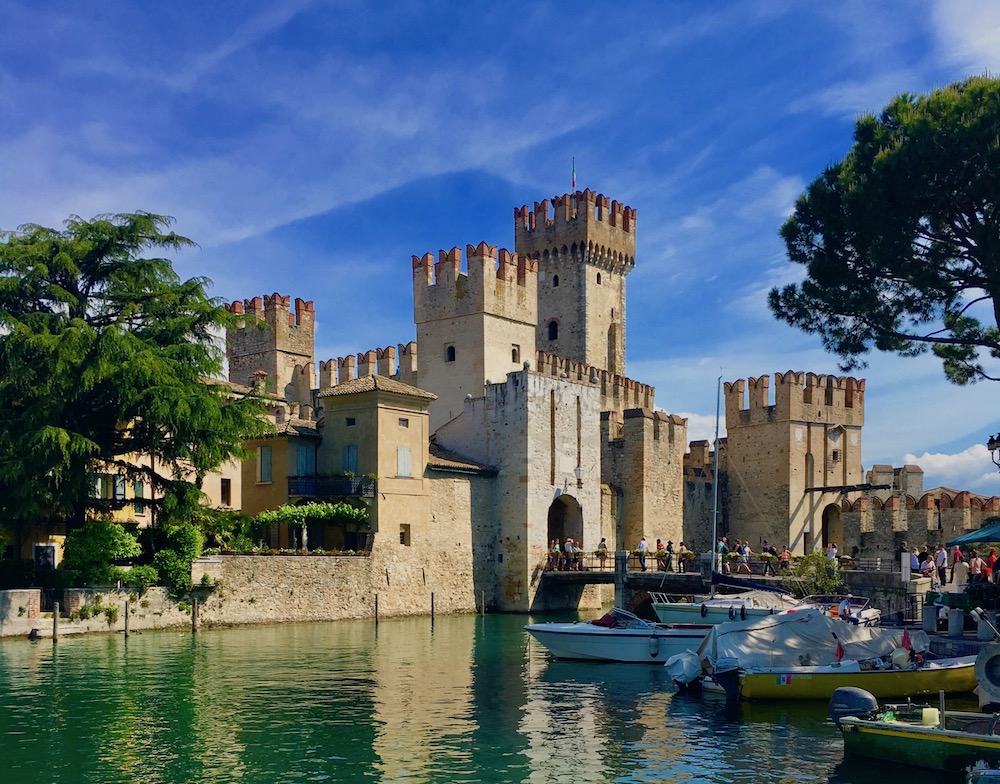
During the 13th century Sermione fell into the hands of the wealthy noble Scaliger family, which controlled much of the lands around Verona and Lake Garda. They built the impressive castle situated in the heart of the village and surrounded it with a moat that can only be entered by two drawbridges. Today the castle’s main room houses a small museum with local finds from the Roman era and a few medieval artifacts.
From there we headed back to Desenzano to drop off the boat, then to the hotel for lunch, nap, and to plan our next day visit to Verona. But by boat is really a great way to see the lake and many of its villages, without having to deal with car traffic and parking. There is free dock moorage at most of the village ports, although I’m sure they get full quickly during the summer months.
We had dinner at the hotel’s restaurant, which has a large terrace overlooking the lake on the main floor. We started with a charcuterie plate of local specialties. Dinner was a pappardelle pasta with deer meat – wonderful! We splurged and had Frati’s best bottle, a 2008 Pietro da Cero. Expensive but well worth it. Amazing aroma and taste – there definitely is a unique Lugano wine flavor.
On Saturday morning we went back early to Sermione, this time on foot, to beat the crowds. By the time we were leaving there were streams of people coming in by car, bus, bike and on foot. We spent a couple of hours walking its quaint streets, visiting the Scaliger castle and the Roman ruins at the far end of the point. It’s a great little town, but it must be crazy busy during the summer months. The point seems to made up just of hotels, spas, large villas, shops and restaurants – don’t see room much for the locals. After Sermione we returned to our hotel to check out and headed for the train station to take us to Verona.
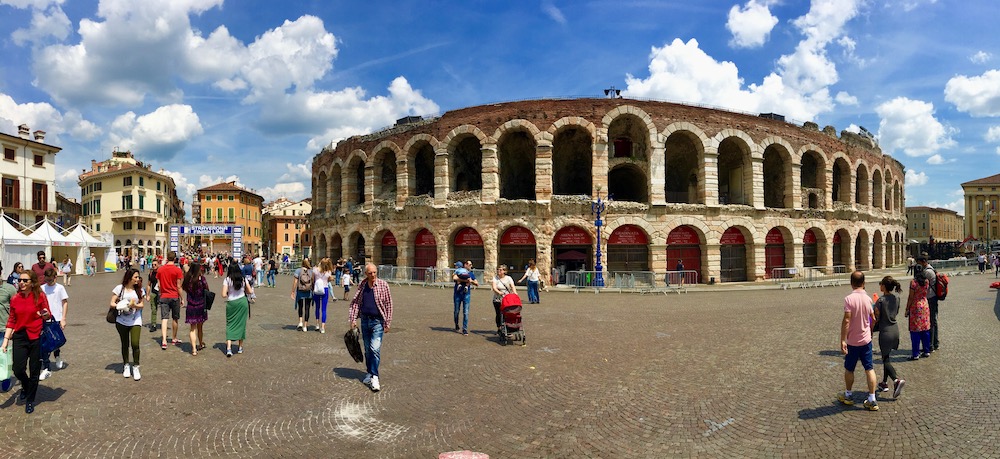
Verona

Verona is as romantic and beautiful as all the travel guides say. The turquoise-colored Adige river wraps itself around the historical center of Verona, bordering it on three sides. The streets are very walkable, there’s plenty to see, and so many restaurants that look so enticing – it’s unfortunate you can’t do them all. Verona is known as the setting for Romeo and Juliet, as well as for another play of Shakespeare (although he never actually went to Verona!) – Two Gentlemen of Verona.
The entrance to old town Verona for most begins by passing through the gate of Porta Nuova and entering into the largest plaza in Verona, Piazza Bra, which has the third largest Roman amphitheater in Italy in its center. It was built around 30 AD and could seat 25,000 spectators in its time.
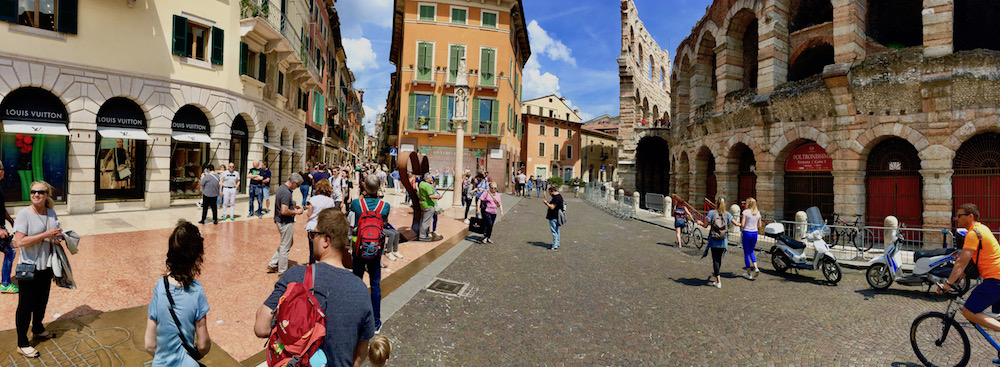
Today, though, only a fragment of the original outer perimeter’s white and pink limestone walls remain. The interior, however, is virtually intact and quite impressive; it is now used for public events, fairs, theatre and open-aired opera.

Piazza Delle Erbe is stunning – be sure not to miss it. Beautiful architecture around art sculptures with a small tourist’s market in the center.
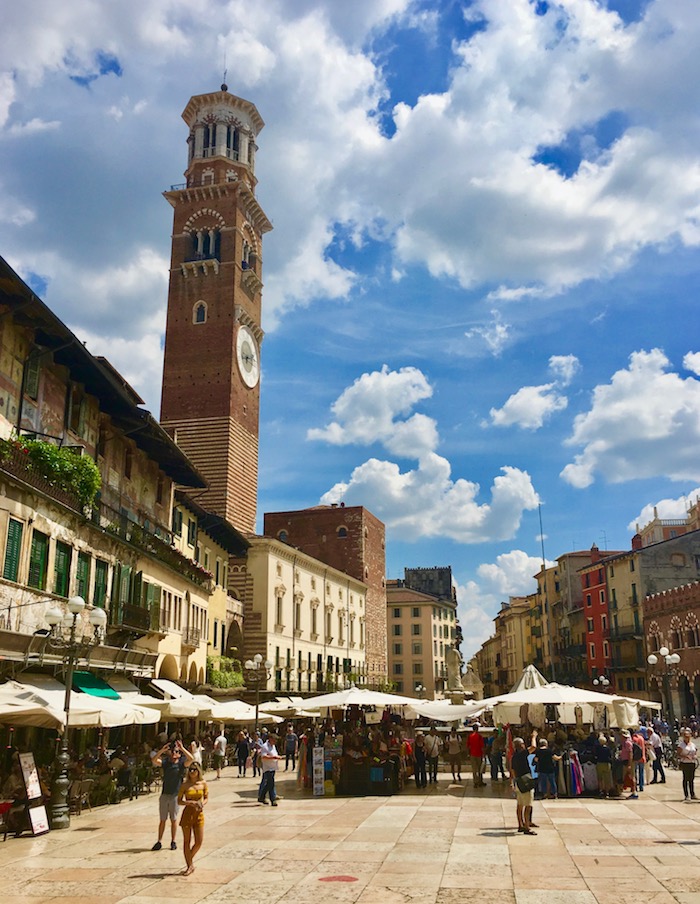
It is centered around the Torre dei Lamberti, a medieval bell tower that was started in the 12th century and finally reached its current height of 84 meters (238 steps or you can take an elevator). Beside the tower is the Casa Dei Gidici (Judges’ Hall) and the beautifully frescoed Mazzanti houses.
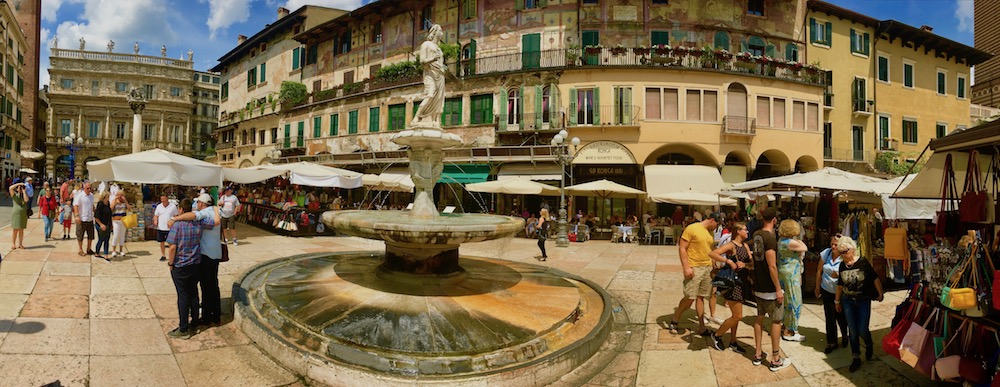
At one end, (to the left in the photo above), is the Baroque Palazzo Maffei decorated by statues of Greek gods. It is faced by a white marble column on which is St. Mark’s Lion, symbol of the Republic of Venice. The square’s most ancient monument is the fountain surmounted by a statue called Madonna Verona, which is a Roman sculpture dating to 380 AD. At the other end is the site of the ancient Roman Capitol Hill, which looked towards the forum. Numerous of the buildings facing the square have beautifully maintained façade frescoes (as shown in the photo above).

Behind Piazza Delle Erbe and the bell tower, (you pass through a gate in the middle of the plaza), is Piazzio Signori, a small square surrounded by monumental buildings. In the center is a statue of Dante and perched atop buildings around the square are more famous signori.
Just around the corner from Piazza dei Signori are probably the most famous monuments of Verona: the Arche Scaligere – five elaborated Gothic funerary monuments. They belong to members of the Scaligeri family, (they built the castle in Sermione), who ruled Verona in the 13th and 14th centuries.
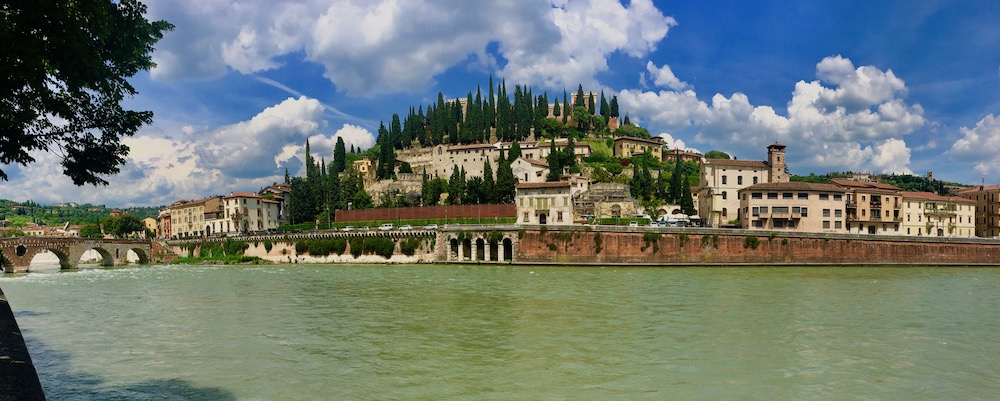
At the far end of old town Verona one can look back over the River Adige to the San Pietro Castle, which you can get to by walking over the now pedestrian-only Ponte Pietra bridge. It is also a museum and a great viewpoint that looks back over all of Verona.
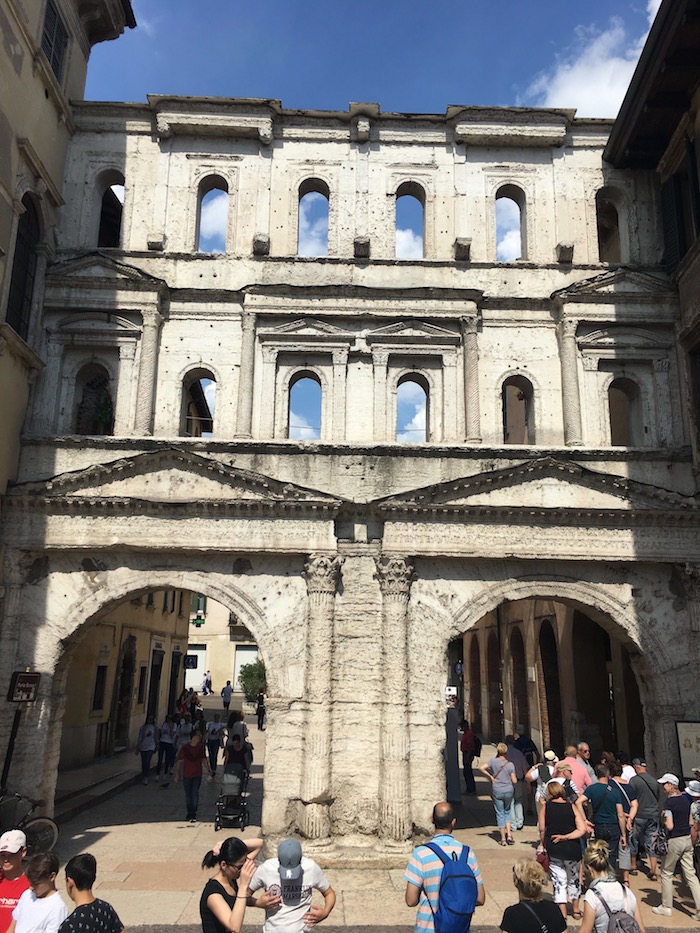
Leading to the Castelvechio castle, which is now a museum, is the Porta Borsari, another city entrance and an archway at the end of Corso Porta Borsari. This is the façade of a 3rd-century gate of the original Roman city walls. The inscription is dated 245 AD.
We stopped for lunch nearby and had pizza at small restaurant, with Aperos, and then made our way back to the train station, passing the Castelvechio castle on the way.
From Verona we headed back to Venice to stay for the night and then prepare to catch our flight in the morning back to Nice. It was a quick but wonderful trip – we will certainly be back to explore more of Italy’s famous lakes district.










